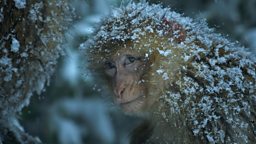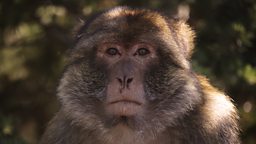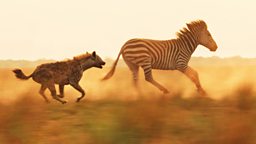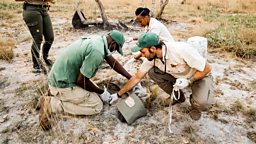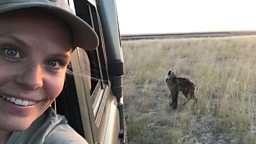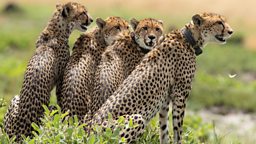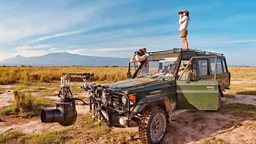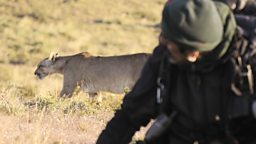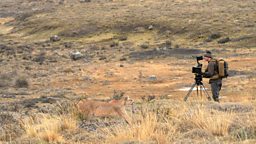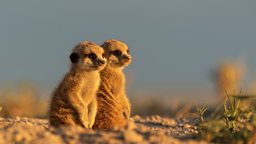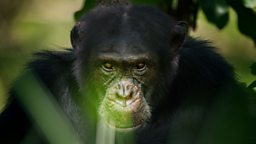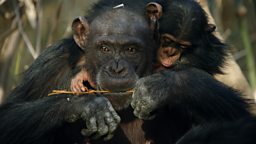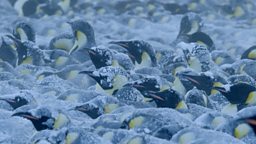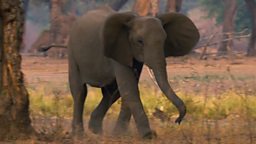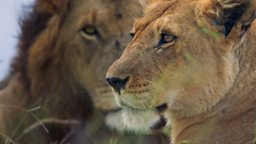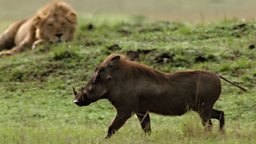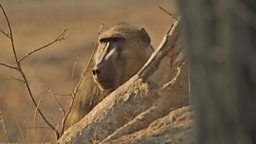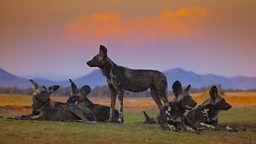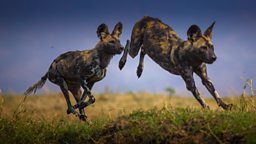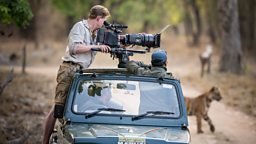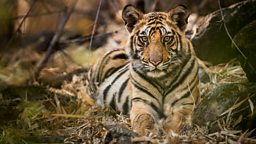Hunting with spears and other behind the scenes behaviours
By Rosie Thomas
To make the 主播大秀 Dynasties Chimpanzee film we spent over 300 days in the field, and filmed over 300 hours of footage. In order to condense two years of footage into 50 minutes, there were many moments that couldn’t be included, especially if they didn’t relate to David the alpha male’s story.
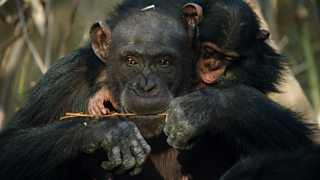
One incredible behaviour that we witnessed numerous times, and is completely unique to this group of chimps as far as we know, was the practice of using spears to hunt.
In the rainy season hollow branches fill with water. Bush babies, or Galagos, live inside these branches and the flooding pushes them up towards the opening. The chimps know this and they make a tool to get them out. They snap off a stick and peel the ends of the bark to make one end sharper. They then plunge the sticks into the holes to spear, or flush out, the bush babies, which they grab and then eat.
Some males can do this spear-hunting - David for example - but it’s the females who are the most skilled. We also saw youngsters trying to work out how to spear the bush babies and some of the older infants became adept quite quickly.
It was utterly fascinating to watch. In the first place, the dexterity in chimpanzee hands is amazing. Their hands are so human-like and their process of knowing how to make a tool and use it illustrates their high intelligence.
The group have learnt this unique behaviour in order find enough food all year around because food sources in their forest savannah habitat are both spread out and seasonal.
And there’s another reason, too. While hunting bush babies and other primates such as baboons or vervet monkeys on the ground is a source of food, the meat is also currency. A chimp will use it to curry favour with other individuals.
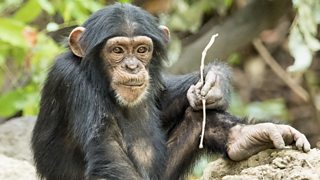
We saw plenty of competition and fighting and squabbling over the meat but also a lot of subservience, handing over and allowing others to approach to take the meat and share it. It was a way chimps could relate to other chimps within the complex social structure, in which alliances would shift all the time.
When there was meat in the group, which was rare, we could see clearly how the hierarchy and relationships played out through how they shared it and who they shared it with. Who David, the alpha male, was willing to share his meat with was very important, for example. He would sit and eat and others would come and beg for food and then he’d decide whether to share it. He’d often share with females - to keep them on side - or infants but he was far less likely to share with adult males unless they were allies.
Another behaviour we saw was the raiding of bees nests for honey. This was a lot more fun for the chimps than it was for the team. You never wanted to be around when the chimps raided a bee’s nest. You’d hear a banging and then the buzzing and you’d have to pick up your kit and run as fast as you could in the opposite direction, sometimes several kilometres. African bees are so much more aggressive then European bees. The bees would just keep chasing you and if they caught up with you, you’d get stung.
But the chimps weren’t bothered by it and anyway the honey was a big reward. So while we were running away in 40 degrees heat the chimps would just sit there peacefully eating their honey.
